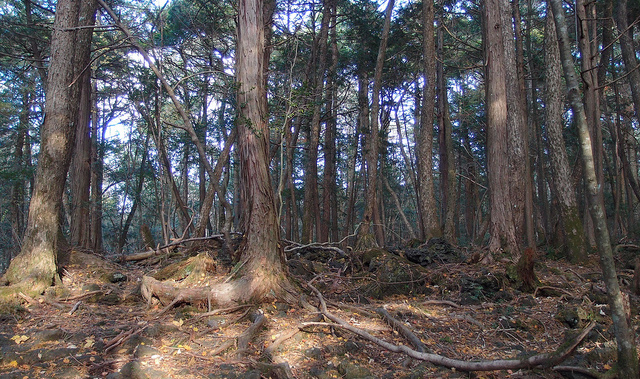By Daphne Auza
Landmarks can be renown for their grandeur, their unique locations and of course the history associated with them. Whatever the outstanding qualities may be people will travel far and wide to experience them. What does not seem clear is why some famous landmarks have also become infamous sites for suicide.
For most landmarks, these tragedies are not common occurrences, but the numbers are still startling. Annual death rates have been assigned to popular attractions such as Canada’s Niagara Falls, France’s Eiffel Tower, the London Underground and San Francisco’s Golden Gate Bridge. This past August, a coroner recorded ten suicide jumps from the bridge, the highest number of deaths to occur on the landmark in one month.
In Japan, the most popular area for suicides is the Aokigahara Forest, part of the dense vegetation surrounding the base of Mt. Fuji’s inspiring majesty. Aokigahara is also known as “Jukai”, or “The Sea of Trees”, because of the lush greenness it exhibits year around. The foliage grows thick over a cooled lava flow, the remaining evidence of a ten-day volcanic eruption in 864.
To those who do not yet know its story, it might seem strange that 50 to 100 bodies are found each year in a place so full of life. For this reason, the Aokigahara Forest intrigued Azusa Hayano, a geologist whose work usually concerns environmental protection.
In 2011, VICE Media released a mini documentary called “Suicide Forest”, which follows Hayano as he makes a solo suicide patrol off the forest’s beaten trails. Since 1970, law enforcement has been responsible for doing complete sweeps of the forest, but these can only occur annually because the nearly impenetrable vegetation around Mt. Fuji is so difficult to navigate. Having lived in the area for 30 years, Hayano explained in the documentary why he chooses to return whenever he can.
“Studying how people coexist with nature is part of environmental research,” he said. “I was curious why people kill themselves in such a beautiful forest.”
It is easy for a documentary on this topic to base its appeal on shock value, but from the beginning, Hayano’s respect and compassion defines the film’s mood. While guiding the camera crew through Aokigahara, Hayano tells them that on his patrols, he has encountered hundreds of people contemplating their deaths and convinced them to continue their lives. Even during the documentary, he stumbles upon a young man and encourages him to think positively, although he does not force him to leave his encampment.
Still, the documentary does not leave out the more haunting images of Aokigahara. Hayano points out the tapes and lines that run along the trees, as though someone wished to keep track of the way out. He explains that the markers are made by those still indecisive about ending their lives. Then there are the abandoned tents and trinkets, with their owners nowhere in sight.
The reasons behind the number of deaths in Aokigahara are as vague and varied as they are for other famous landmarks. Death rates apparently surged after the publication of the 1960 novel “Kuroi Jukai” by Seicho Matsumoto, which ends with two lovers killing themselves in the forest. Another written work, “The Complete Manual of Suicide” by Wataru Tsurumi, describes the forest as the “perfect place” to end one’s life and is often found in the bodies’ vicinity.
Hayano had his own suggestion for why people leave their lives behind and venture out to the forest: social pressures. In the documentary, he said that society has begun to place less value on face-to-face interaction, and therefore people feel more isolated. Perhaps that is why he finds his work in the forest – although unconventional for his field – so important.
Near the end of the film, Hayano stumbles upon flowers and a box of chocolates placed at the base of a tree. He gestures for the cameras to take a closer look.
“You think you die alone, but that’s not true,” Hayano said. “Nobody is alone in this world. We have to coexist and take care of each other.”
Photo by *_*



